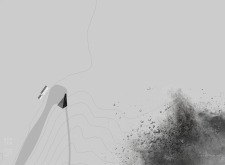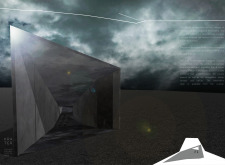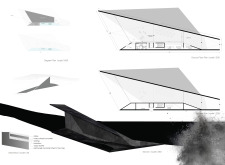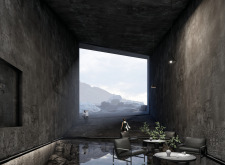5 key facts about this project
The architecture prominently features a harmonious blend of open spaces and defined areas, carefully designed to promote interaction and engagement among users. The layout reflects a clear understanding of the dynamics of movement and social interaction, with strategically placed gathering areas that invite collaboration and community engagement. The building’s design prioritizes natural light and ventilation, enhancing the overall user experience and reducing reliance on artificial lighting and climate control systems.
A significant aspect of the project is its material palette, which includes a thoughtful selection of sustainable materials that contribute both to the building’s aesthetic and its environmental performance. The use of locally sourced materials not only minimizes the carbon footprint associated with transportation but also establishes a connection to the local culture and craftsmanship. Various textures and finishes are employed throughout the project, underscoring a commitment to detail while creating an inviting atmosphere. This consideration for materiality plays a crucial role in creating a sense of place and identity for both the building and its users.
The design is characterized by unique architectural features that enhance its functionality and aesthetics. For example, the incorporation of green roofs and living walls not only contributes to the building’s environmental goals but also provides visual relief and promotes biodiversity. These features exemplify a contemporary approach to architecture that emphasizes ecological responsibility, presenting an opportunity for occupants to engage with nature within an urban context. Such elements also reflect a broader trend in architecture that seeks to blur the boundaries between indoor and outdoor spaces.
In addition, the project embraces innovative technologies that support its sustainability objectives. Solar panels are discreetly integrated into the design, allowing the building to harness renewable energy while maintaining a clean visual profile. Water-efficient systems and rainwater harvesting demonstrate a proactive response to resource management, aligning with global efforts towards more sustainable practices in architectural design.
The overall aesthetic of the architecture is a careful balance of form and function, characterized by clean lines and a contemporary silhouette that respects the historical context of the site. The facade presents a dialogue between transparency and enclosure, inviting exploration while providing necessary privacy and protection from the elements. Large windows offer panoramic views of the surrounding landscape, further connecting the interior spaces with the outdoors.
The interior layout is designed to cater to a variety of uses, from public spaces that promote interaction to private areas that allow for focused work and contemplation. This flexibility is essential in responding to the evolving needs of the users, fostering a sense of adaptability that is increasingly important in modern architectural practice.
The integration of community-oriented spaces within the project speaks to a broader objective of enhancing social connectivity. By providing areas for events, exhibitions, or casual gatherings, the architecture serves not only as a physical structure but also as a catalyst for community building. This emphasis on social interaction is increasingly relevant in today’s architectural discourse, where the role of buildings extends beyond mere shelter to become integral components of vibrant communities.
Encouraging further exploration, the reader is invited to examine the architectural plans, sections, and various design elements that are pivotal in understanding the depth of this project. A closer look at these architectural designs reveals how thoughtful planning and innovative approaches intersect, creating a space that is not only functional but resonates with the community it intends to serve. This analysis underscores the importance of design in shaping our environments and invites a deeper appreciation of the architectural ideas that inform this compelling project.


























